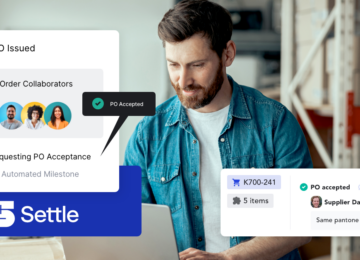The supply chain industry is slowly recovering from the damage caused by the pandemic. Indeed, 2023 has started with somewhat of an industry correction with the reduction of shipping rates and the resolution of many port congestions and delays. Now, the supply chain space is expected to experience a CAGR (Compound Annual Growth Rate) of 11.2% between 2020 and 2027 – or a market value increase of over $37 billion.
Of course, one of the biggest contributors to this growth is ecommerce. And as U.S. consumer spending online continues to grow despite warnings of a recession, it’s a fair question to ask is: How does ecommerce keep up with this incredible demand? Well, their reliance on kitting in inventory management is a huge reason why.
What Is Kitting?
Instead of attempting to package and sell a single product at a time, kitting in inventory management is the process of taking similar items and combining them to create a value-added kit. You can look at it as the , “do you want fries with that?” of the fulfillment industry — or a “batteries are included” benefit to increase customer satisfaction. There are three types of kitting:
1. Kitting in Order Fulfillment
The kitting process in order fulfillment means that similar individual items are packaged together and ready to be shipped as a single kit with its own SKU. An auto parts warehouse might combine everything needed to replace brakes in a kit, or a do-it-yourself furniture piece could be assembled with all the parts and screws necessary to create a bookshelf or desk. Kits are usually preassembled, so they can be shipped as soon as an order is received, or prepared as subscription boxes for delivery on a designated schedule.
2. Kitting in a Warehouse
Warehouse kitting is the process of gathering the necessary materials together to make up a specific product and delivering them to the production floor to be assembled into the final piece. Parts are usually arranged in a specific order from station to station as the workpiece goes through the production process. This might mean gathering all the parts to manufacture an automobile or an appliance, for example, so the assembly line can function without interruption.
3. Private Label Kitting
This form of kitting is when a group of products from different providers are gathered and shipped as one package from another company. Perhaps the best example of private label kitting can be seen in Amazon Fulfillment Services, which warehouses individual products from the ecommerce site, so fulfillment teams can gather them as customer orders come in. This allows the company to efficiently fulfill an order for pants, earbuds, and a coffee maker.
How Does the Kitting Process Work?
Many industries can use kitting services efficiently to increase sales and customer satisfaction. Although some details vary from company to company, the key steps in the kitting process generally include:
1. Determine the Kit Arrangement
The first major decision in the kitting process is to determine exactly what will go into the completed kit. This decision may be based on multiple factors, depending on the company. For example, a company might want to promote a new product or move dead stock. Some companies might want to offer a kit to make it easier to buy items customers typically buy together in order to increase sales.
2. Decide Who Will Assemble the Kit
A company may provide kitting services for order fulfillment itself or outsource the kitting process to a third-party private kitting contractor for assembly, labeling, and shipping.
A third-party logistics provider (3PL) is a provider that offers outsourced logistics services. They can manage everything in the order fulfillment process, including product kitting. Companies rely on third-party logistics for kitting to provide the expertise and best practices needed to integrate easily into existing supply chain logistics.
3. Assign the New Bundle a Unique SKU Number
To avoid confusion for warehouse management, it’s best to assign a new SKU number so the company can better track sales and inventory.
4. Sell and Ship the Kits
Once everything is prepared on the inventory and management side, marketing can begin promoting the kits and increasing sales.
Benefits of Kitting in Logistics
Kitting in logistics has many benefits for companies, especially the ability to save time and realize cost savings. But they can also increase customer satisfaction by combining the most popular products into cost-effective kits. Some of the many benefits of kitting include:
Increased Product Sales
Kitting makes a lot of sense in ecommerce because retailers can use it to combine individual orders into larger ones. Customers are more motivated to make larger purchases when products are offered as kitted items.
Lower Labor and Shipping Costs
Companies use kitting to realize larger sales while lowering labor costs and shipping costs. Kitting can be done ahead of time to better use warehouse personnel and get ahead of customer order fulfillment services. You can establish a workflow routine for fulfillment operations, so responding to the need for kitted products is quick and easy. Since transportation costs can currently be quite high, combining components makes sense, so items can be delivered in one shipment instead of several individual ones.
Reduced Warehousing Costs
High warehousing and distribution costs are some of the biggest detractors from bottom-line corporate profitability. Kitting allows logistics companies to streamline these functions dramatically and reduce the total warehouse space required to store these items.
Heightened Warehouse Efficiency
Kitting can reduce the total amount of inventory on hand, and it also helps to optimize warehouse functionality. Instead of managing hundreds or thousands of single SKUs, kitting reduces the number of SKUs on hand. This helps to increase warehouse efficiency, especially as it relates to the picking and assembly processes. With fewer items to track, order fulfillment becomes much easier.
Expedited Weighing and Shipping
Shipping individual items can lead to errors in weighing and shipping. When items ship in consistent kitted form, the fulfillment center already knows the weight and cost, so it can utilize pre-printed shipping labels. Each step achieved in consistency eliminates a potential chance for error. Shipping vehicles and containers can also be maximized using kitted items packaged in boxes of uniform size and weight.
Utilize Efficient Tools for Kitting
Centralizing your kitting and ecommerce fulfillment requires using efficient supply chain management tools. Purchase order management systems like Anvyl help brands manage their entire PO process – including POs that involve kits. Built for operational and production teams in the consumer brand space, Anvyl tracks, manages, automates, and shares everything from PO issuance to delivery to your warehouse. Talk to someone today to learn more.



